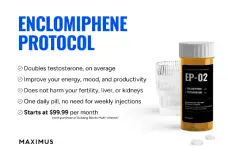Seagal
Well-Known Member

Bioavailable testosterone is associated with symptoms of depression in adult men
This study aimed to determine the relationship between serum testosterone levels and depressive symptoms in an adult male population.We conducted a cross-sectional study of 1166 male participants from Zunyi, Guizhou, China. Each participant completed ...
Results
Mean testosterone, sex hormone-binding globulin, and luteinizing hormone levels were significantly higher in the depressive symptom group than in the non-depressed group. The mean calculated free serum testosterone level and free testosterone index (FTI) were significantly lower in the depressive symptom group than in the non-depressed group. Additionally, the mean FTI was significantly negatively correlated with the Beck Depression Inventory scale score in the multiple linear regression model (95% confidence interval: −3.274 to −0.406).
Calculated free serum testosterone (cFT) was quantified using Vermeulen’s formula and calculated as follows: free testosterone (nmol/L) = −a + √b)/c/10−9, with a=SHBG (nmol/L)−total testosterone (nmol/L) + 23.43, b = a2 + (4 × 23.43 × testosterone [nmol/L]), and c = 2 × 23.43 × 109.32 The free testosterone index (FTI) was defined as testosterone (nmol/L)/SHBG (nmol/L) and the testosterone secreting index (TSI) as testosterone (nmol/L)/LH (IU/L).















